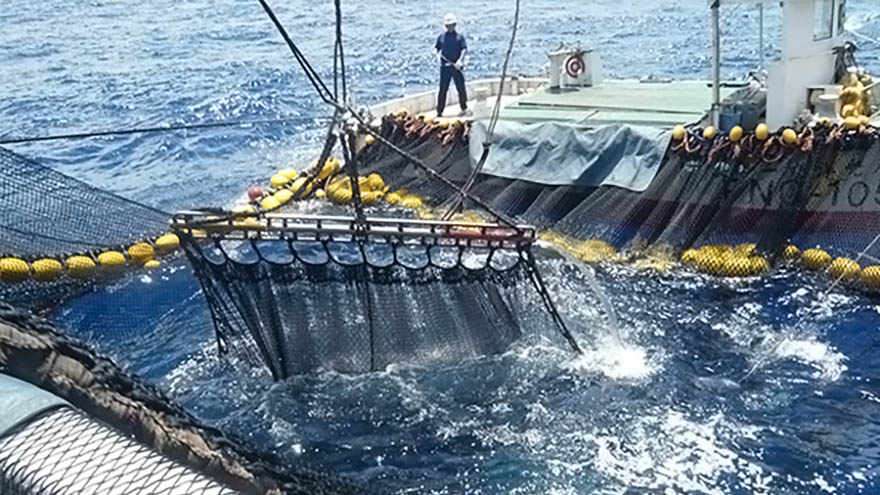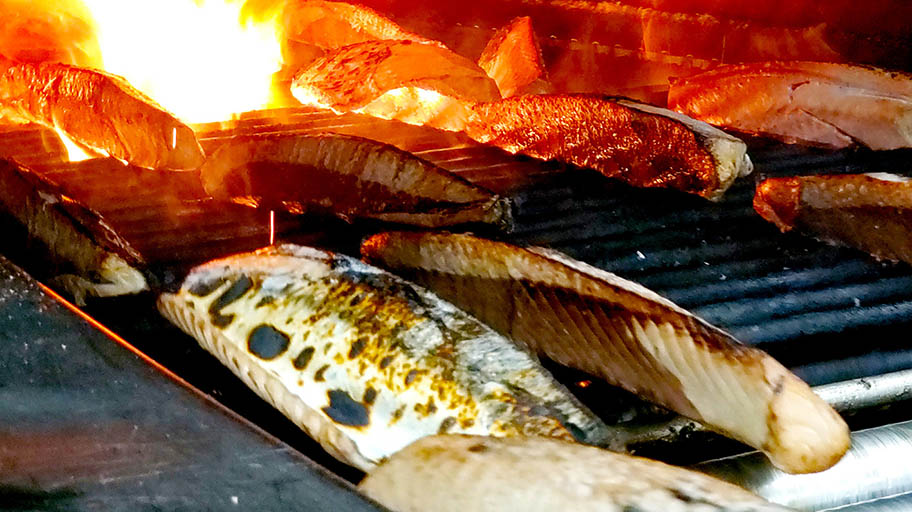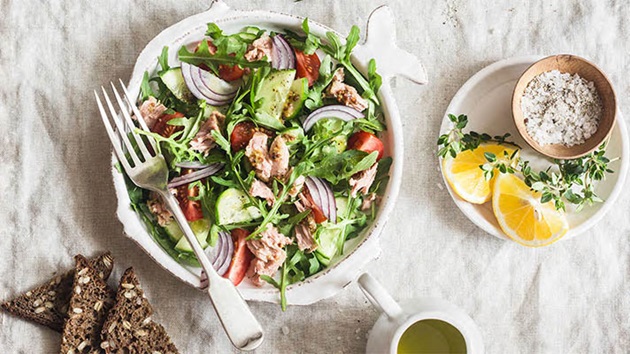Fishing in the Western Central Pacific Ocean, two partner fisheries Kyowa and Meiho have become the first Japanese flagged tuna vessels using purse seine gear to achieve certification to the MSC Fisheries Standard for environmental sustainability.
Their journey to certification was supported by conservation organisation, WWF Japan, and Kyowa-Meiho is one of thirteen Japanese fisheries to meet the MSC's requirements.
The fishery catches both skipjack and yellowfin tuna, which will be sold canned, dried as Katsuobushi bonito flakes, or fresh sashimi products in the domestic market, or exported internationally.
 Purse seining in the Kyowa fishery
Purse seining in the Kyowa fishery
Certification will give the fishing companies access to international markets, where total sales of MSC labelled tuna products in financial year 2022 almost tripled over the past five years, reaching a record 178,000 metric tonnes.
Mr. Hiroshi Hashizu, President & CEO of Kyowa Suisan Co., Ltd acknowledged certification was important not just for their businesses but also for the future of the fish stocks they harvest from and the wider environment: “In recent years, we have begun to feel that tuna resources have been gradually decreasing.
“Under such circumstances, we believe it is our mission to conduct sustainable fishing through resource management and environmentally friendly fishing practices.”
The MSC Fisheries Standard incentives fisheries to make improvements to ensure their practices are among the best in the industry. It is a condition of certification that improvements happen within a five-year certification cycle.
As part of its certification, Kyowa-Meiho have been tasked by independent auditors to close six conditions for improvement over the next five years.
The improvements relate mainly to potential impacts of fishing on endangered, threatened and protected (ETP) species such as silky sharks, whale sharks, turtles, manta and mobula rays.
The fishery must provide evidence that their handling and release of any inadvertently captured ETP species meet best practice levels.
Like many tuna purse seine operations, the fishery uses Fish Aggregating Devices (FADs), large floating structures that attract tuna, to locate their catch. FADs can be problematic because as well as attracting tuna, they can attract other predators that feed on the tuna and fish gathered underneath the floats.
Abandoned FADs can also damage and litter marine habitats therefore the fishery is required to provide evidence that the gear’s locations and use is mapped and logged.
The fishery will be audited annually to ensure their progress towards their improvement goals.
 Tataki preparation with skipjack tuna from the Meiho fishery
Tataki preparation with skipjack tuna from the Meiho fishery
Both companies have been fishing mainly in the waters around The Federated States of Micronesia, and Papua New Guinea. Becoming increasingly aware that tuna stocks were diminishing they set out to improve their practices and aim for certification to the MSC’s Fisheries Standard.
Mr. Kenji Matsunaga President of Meiho Gyogyo Co., Ltd. said, “Recently we have been faced with a truly difficult situation, with dwindling fish stocks, soaring fuel oil prices, and an aging crew. This is a transitional period for the industry, and we believe that this is a good opportunity for our company to reconsider the future of the fishing industry.”
The Standard ensures stocks can replenish, fishing impacts to marine environments and habitats are minimised, and that fisheries meet local, national and international laws, with strong fishery management strategies in place.
Mr. Matsunaga reflected on the achievement: “We will continue to operate with pride as Japanese fishermen and as a fishery company that holds MSC certification,” while Mr. Hashizu noted the task ahead: “We will continue to review our operations and maintain the certification.”


